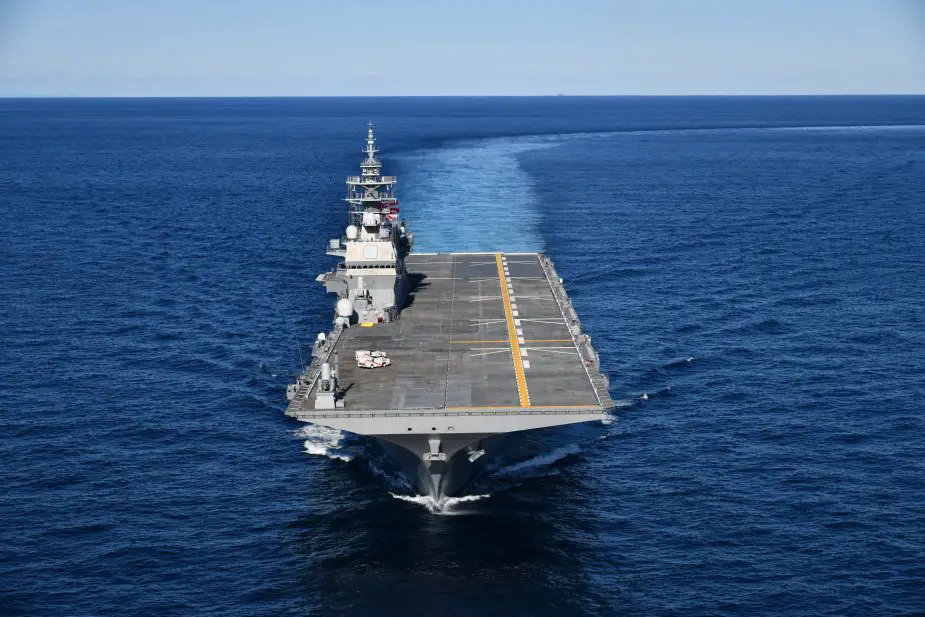Breaking news
Japan JMSDF unveils partially converted aircraft carrier JS Kaga.
According to information published by NHK on April 8, 2024, the Japan Maritime Self-Defense Force (JMSDF) has partially completed the conversion of its large escort ship, JS Kaga, into a de facto aircraft carrier, making it capable of launching and recovering fighter jets. This important development features modifications that allow the use of the Air Self-Defense Force's stealth fighter, the F-35B.
Follow Navy Recognition on Google News at this link
 Japanese light aircraft carrier JS Kaga. (Picture source: JMSDF)
Japanese light aircraft carrier JS Kaga. (Picture source: JMSDF)
The Ministry of Defense has undertaken this large-scale modification in two phases to effectively transform the JS Kaga into an aircraft carrier. The first phase of modifications, conducted at a shipyard in Kure City, Hiroshima Prefecture, was completed last month. It included altering the deck's shape from a trapezoid to a rectangle and applying heat-resistant coating to withstand the high temperatures from the jet engines, ensuring the safe launch and recovery of fighter aircraft.
In addition to JS Kaga, the Ministry of Defense is also planning to convert its sister ship, 'Izumo', into an aircraft carrier. This involves applying heat-resistant paint to the deck and conducting take-off and landing tests with the F-35B, with the second phase of modifications expected to start within this fiscal year and completion anticipated in about two years.
The government has clarified that neither JS Izumo' nor JS Kaga will permanently carry squadrons of F-35Bs, ensuring they do not qualify as "attack-type aircraft carriers," which are prohibited under Japan's constitution.
Context
Japan's consideration for aircraft carriers stems from a combination of historical context, regional security dynamics, and strategic necessities. Historically, Japan was a leader in ship-based aviation, with its carriers playing significant roles in early 20th-century conflicts. However, post-World War II pacifism and constitutional constraints shifted Japan's stance away from such "offensive" capabilities.
The recent shift towards reviving carrier capabilities is largely driven by concerns over regional security threats, particularly from China. China's assertive maneuvers in the East China Sea, especially around the disputed Senkaku Islands, have prompted Japan to take measures to strenghten its defense capabilities.
Aircraft carriers would provide Japan with a flexible and responsive military force capable of defending its interests and contributing to regional stability. However, the operational scope of these carriers is expected to be modest compared to larger U.S. and UK counterparts, focusing on defending vulnerable areas.



























